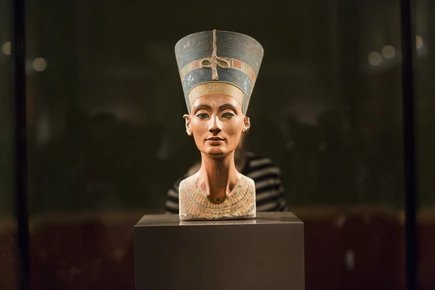
Seokwon Hong, conductor; Pagh-Paan / Ravel / Messiaen / Sibelius
The Busan Philharmonic Orchestra will be celebrating the 80th birthday of the Korean composer and first female professor for composition in Germany, Younghi Pagh-Paan, in their concert at the Musikfest Berlin.
Two orchestral works premiered in Donaueschingen, “Sori” (1980) and “Frau, warum weinst Du? Wen suchst Du?” (2023), exemplify the numerous decades of compositions by Pagh-Paan which have left their mark on contemporary music.
These compositions are juxtaposed by three works originating in the 1920s and 1930s: Maurice Ravel’s “Piano Concerto for the Left Hand” (1930) in which the soloist is Ben Kim, winner of the 55th ARD International Music Competition; Olivier Messiaen’s four symphonic meditations, “L’Ascension”; and the Seventh Symphony by Jean Sibelius, his final symphony to be completed.
Younghi Pagh-Paan achieved her international breakthrough with the first performance of “Sori”. The work is influenced by social issues and the traditions of Korean culture. The political folk theatre “madang-guk” provided major inspiration: this masque theatre derived from traditional Korean art forms became popular in the 1970s and 1980s as resistance theatre protesting against political repression.
The emotional source of the work is resentment which pervades the entire composition, primarily simmering threateningly just under its surface. Here Pagh-Paan focuses on the stifling of personal emotions and feelings which she experienced in the society of her native country.
“Sori” takes its influences from two types of Korean folk music: “nong-ak” is a now virtually extinct cultural and religious practice prevalent in rural areas involving prayer, thanksgiving and the driving out of evil spirits with the aid of percussion and wind instruments, dance and acrobatics, and “hyang-du-ga” is a type of funeral music.
In “Frau, warum weinst Du? Wen suchst Du?” [Woman, why are you crying? Who are you looking for?], Younghi Pagh-Paan relates a love story as exemplified by the Bible quotation forming the work’s title. The words are uttered by Jesus after his Resurrection to Mary Magdalen whose pain at finding the empty grave of Jesus stands for the pain that is irrevocably associated with love.
Instead of placing the Bible story of the Resurrection in the foreground, Pagh-Paan focuses on the distress of a weeping and lamenting individual. The composer depicts compassion and solace from which strength develops in an atmospheric orchestral work radiating peace and inner strength.
in honour of Younghi Pagh-Paan
Younghi Pagh-Paan (*1945)
Sori (1980)
for full orchestra
Frau, warum weinst Du? Wen suchst Du? (2023)
for orchestra
Maurice Ravel (1875 – 1937)
Piano Concerto for the Left Hand in D major (1930)
for piano and orchestra
Olivier Messiaen (1908 – 1992)
L’Ascension – Quatre méditations symphoniques (The ascension – Four Symphonic Meditations) (1933)
I Majesté du Christ demandant sa gloire à son Père (The Majesty of Christ Demanding His Glory of the Father)
II Alléluias sereins d’une âme qui désire le ciel (Serene Alleluias of a Soul that Longs for the Heavens)
III Alléluia sur la trompette, alléluia sur la cymbale (Alleluia on the Trumpet, Alleluia on the Cymbal)
IV Prière du Christ montant vers son Père (Prayer of Christ Ascending Towards His Father)
Jean Sibelius (1865 – 1957)
Symphony No. 7 in C major, op. 105 (1924)
#MusikfestBerlin
Participating artists
Ben Kim
Busan Philharmonic Orchestra
Seokwon Hong
Dates
September 2025
| Mo | Tu | We | Th | Fr | Sa | Su |
|---|---|---|---|---|---|---|
1
|
2
|
3
|
4
|
5
|
6
|
7
|
8
|
9
|
10
|
11
|
12
|
13
|
14
|
15
|
16
|
17
|
18
|
19
|
20
|
21
|
22
|
23
|
24
|
25
|
26
|
27
|
28
|
29
|
30
|


